We thought it was hot in central Anatolia, but we were quite unprepared for the
humidity of the Mediterranean. The ruins along this coast were quite remarkable both in
their condition (given all the time that has passed) and the history (primarily Lycean,
Greek, and Roman) they represent. Our first stop was the modern resort city of Antalya
with ruins including Hadrian’s Gate. However, we found Antalya to be oppressively
humid and hot, congested, frustrating, and the “air conditioned” hotel we stayed
at was awful (it was at this point in the trip that we began to aggressively seek out dondurma—ice
cream—stands).
1999 Turkey Trip Web Pages
|
| The Lycean city of Kekova partially sank during an earthquake about
2500 years ago. We hired a beat-up old fishing boat ($12) at Ucagiz to take us along the
coast of Kekova Island (followed by another swim in the warm waters). It’s hard to
see the underwater ruins unless the water is perfectly still or one goes snorkeling (no
longer allowed). But photo (right) shows a staircase leading into the submerged ruins near
the shore of the island. |
 |
 |
Xanthos was once the capital and “grandest city” of Lycia. We found a
couple of great Lycean pillar tombs, a Roman theater, a pillar with Lycean inscriptions
(below left and detail to the right) among other “bits.” We also spotted an
errant goat (left) hopping from ruin to ruin near where the French are currently
conducting excavations. |
 |
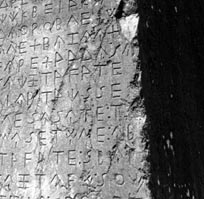 |
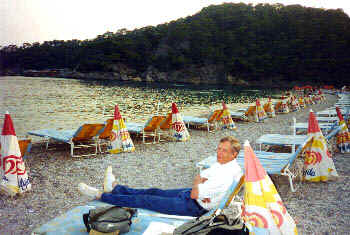 |
Oludeniz did not offer much in the way of ruins but it had a nice
beach (as part of the Blue Lagoon) that had us in the water once again (note Ed, left,
after a nice swim). There were also a lot of paragliders, and it was here that we
also found the only vegetarian restaurant on the entire trip. |
| There weren’t too many ruins in the seaside resort town of Kas
(pronounced cash), but we did find this striking Lycean pillar tomb (surrounded with
carpets from a nearby store) in the middle of a steep cobblestone street. Our hotel had a
nice pool (which required some swimming), and a nearby store garnered Ruth’s award
for cleverest name, “Kas and Carry.” |
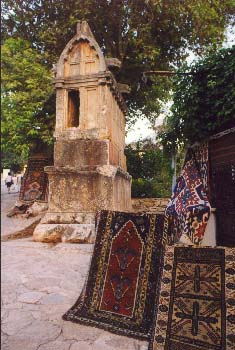 |
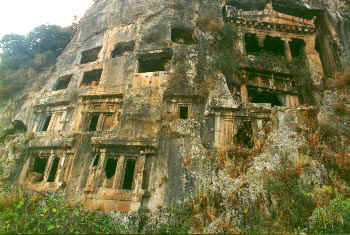 |
We found the 4th century BCE Lycean city of Telmessos, in the
modern Fethiye, to have some terrific temple-like rock tombs carved into the hillside
(left, and below left with Ruth). Also, a recently (1992!) uncovered Roman theater right
smack in town (below). It was while we were staying here (on August 17) that the
earthquake occurred 300 miles to the north though we didn’t feel it. |
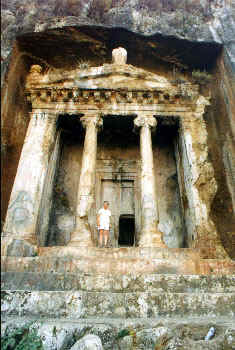 |
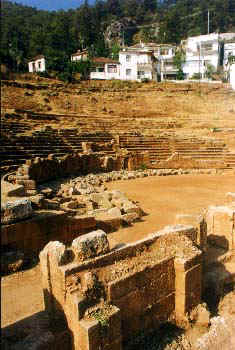 |